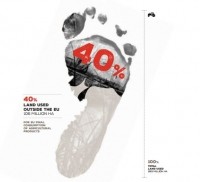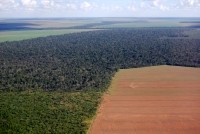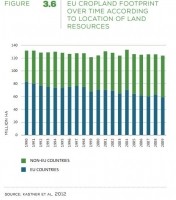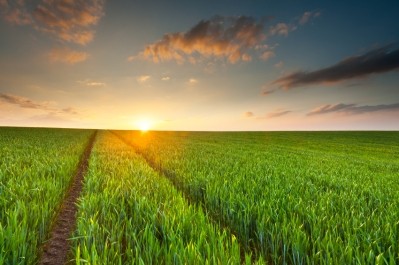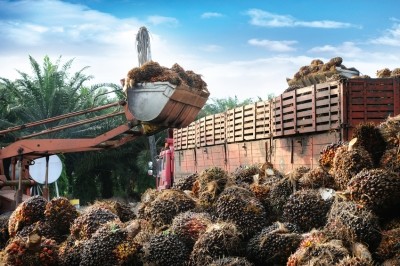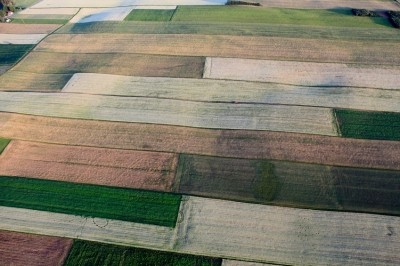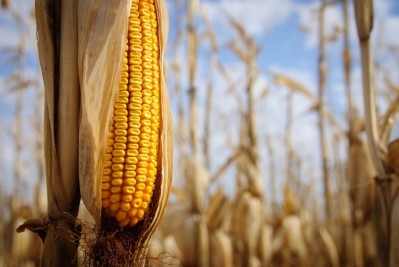EU's appetite for foreign land to produce its food is unjust & unsustainable: FOE report
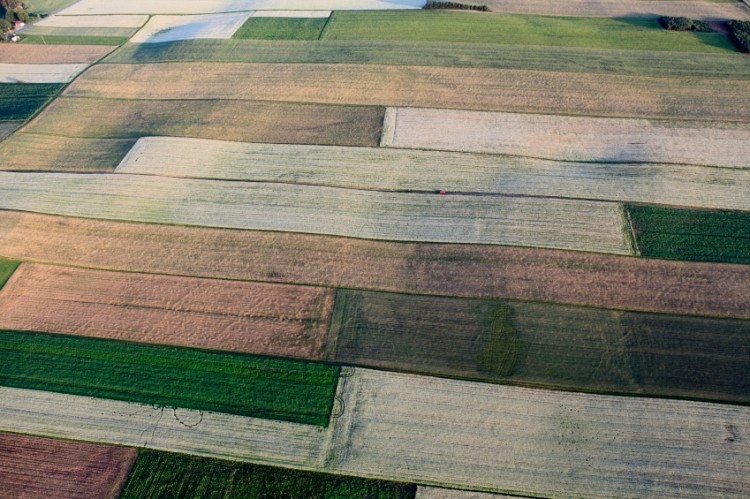
From palm oil produced in Indonesia to soy grown in China or beef from Brazil, this 40% is the equivalent to an area the size of Italy and France combined, says the environmental NGO.
The Center for International Forestry Research (CIFOR) estimates that the EU accounted for 40% of all land acquisitions in sub-Saharan Africa in 2011.
What is a land footprint?
The ‘Land Footprint’ is a consumption-based indicator that measures the total amount of land used domestically and abroad to produce the goods and services consumed by a country or region. "It allows us to quantify the extent to which the EU is dependent on non-EU land and can be a vital tool to ensure the protection of this precious resource and its sustainable use in the future," says Friends of the Earth.
The FOE report largely uses data from the United Nation’s Food and Agriculture Organisation (FAO) which it says is robust.
You can't manage what you don’t measure
Although this is an issue which underpins the food European citizens eat every day, the EU does not keep track of its scale with current EU land policies focus only on domestic issues, says the NGO.
“Goods and services for European consumption are increasingly being produced on land beyond the EU’s borders, driving both land use change and land-related environmental and social impacts. It is vital this is taken into account in policy decisions,” it says.
“Yet strikingly, the EU does not measure Europe’s Land Footprint, and so has limited knowledge of the amount of land the EU uses globally, and the related environmental, social and economic impacts. As a result, combined action is not being taken to reduce risks to the global land system.”
The report gives nine recommendations for policymakers which include: establishing and monitoring EU land footprint reduction targets for each member state; develop policies to reduce consumption of land-intensive products; and promote a reduction in livestock farming in the EU while supporting protein crops in the EU such as beans, lupin or soy.
Which products?
According to the report, more than 70% of the EU’s land footprint in 2010 was used to produce animal products with meat making up the largest proportion; 30% of agricultural land and 27% of cropland resources were linked to the production of beef, lamb, pork and chicken.
Dairy accounted for 25% which largely went towards the production of cheese, while around 18% of this 70% was for non-food animal-derived products such as leather.
But plant-based products do not emerge unscathed. Vegetable oils account for 14% of the EU’s land footprint and this is increasing, mostly driven by demand for biofuels.
In fact, the EU appetite for biofuels, promoted as a sustainable energy source, means that increasing swathes of forest in countries such as Indonesia are converted to palm oil plantations, depriving local communities’ access to land and preventing them from growing their own food, says the report.
For plant-based food products, wheat has the biggest cropland footprint at 8% of the total. Fruit and vegetables make up just 6% while alcohol (mainly beer and wine), coffee, cocoa and tea together account for 9%, says the report.
"This high and growing reliance on land outside of the EU is likely to be related to the EU’s demand for year-round supplies of seasonal products, high consumption of products grown outside of Europe such as coffee and chocolate, imported animal feed for raising animals, and surging demand for vegetable oils."
What’s more, this reliance on products sourced from outside the EU is slowly but steadily increasing (see figure 3.6).
Food campaigner at Friends of the Earth Europe, Stanka Becheva, called for a radical overhaul in how and where Europe uses land.
“Industrialised agriculture and global food chains are swallowing up land across the globe, damaging the environment and rural communities. We rapidly need a just transition to a greener way of farming that works for all people and the planet."
Due to data gaps, the report focuses only on cropland and grassland used for food and non-food products, missing out sectors such as forestry, housing or infrastructure. This means the actual footprint is likely to be much bigger than the figures cited in the report, entitled The true cost of consumption: The EU's land footprint.
The EU and Commission have acknowledged the issue and recognised that it does need to be addressed – a number of reports such as the Commission’s Roadmap to a Resource Efficient Europe or the long awaited “Land as a Resource” Communication – but little action has emanated from this discourse.
To read the report in full click here.
